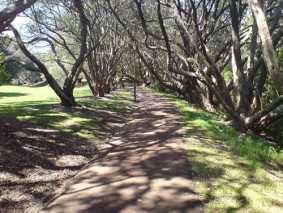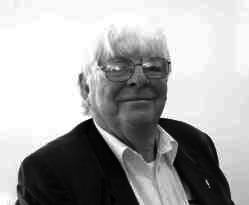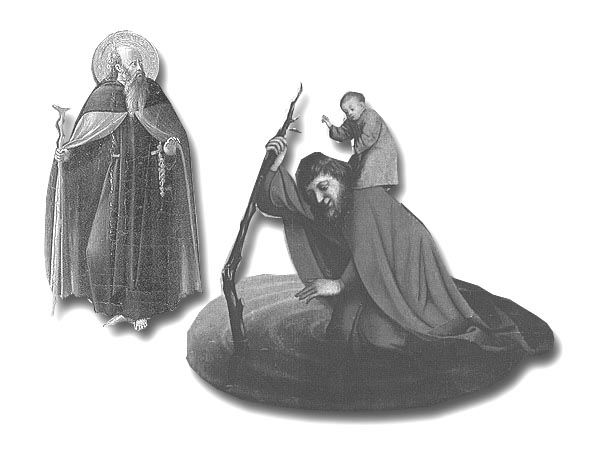Journalists in New Zealand generally show a lack of scepticism when dealing with issues of science and pseudoscience – except for mainstream medicine. This article is based on a presentation to the New Zealand Skeptics Conference, 11 September, 2004
EVERY day about a million people in New Zealand watch the television news. Just under two million read a newspaper. Hundreds of thousands more hear radio news bulletins. But how good is our news media?
On most levels, the public is reasonably well served. Most journalists do try to get the facts and present them fairly. But on issues such as medicine and scientific controversy, the media are not as rigorous as they could and should be.
This is probably partly because there are few, if any, journalists with medical qualifications and few with any scientific qualification. Most journalists have arts degrees, in subjects like English literature, usually with a journalism course added on.
Most journalists today are trained to have a healthy questioning attitude towards politicians, big business, experts of all kinds.
But when it comes to issues like alternative medicine, genetic modification, global warming or the supposed dangers of cellphone transmitters, there appears to be a great lack of scepticism. It leads to cases where the media seriously misinforms the public, such as in 2000 when Television New Zealand and the New Zealand Herald were totally taken in by the promoters of the mussel extract Lyprinol, which racked up millions of dollars in sales when gullible journalists breathlessly announced it was a miracle cancer cure.
The media are also quite easily taken in by well known people with strong personalities and an antiestablishment bent.
Dr Neil Cherry from Lincoln university was one. He believed the electromagnetic energy from high tension power lines and microwave radiation from cellphones caused everything from brain tumours to premature births. He helped to fuel a panic in schools around the country, leading to mass protests about cellphone transmission towers. The media for the most part saw only the word “radiation” and ran dozens of stories that fanned the fears, many of them quoting Dr Cherry.
Another powerful personality who has mesmerised the media over the years is forensic scientist Jim Sprott, who became prominent in the 1970s during the campaign to free Arthur Alan Thomas, a farmer falsely convicted of murder. Dr Sprott went on to promote the bizarre claims of chelation therapy before making his life’s mission in the 1990s attempting to prove that cot death is caused by mysterious emissions from mattresses in babies’ cots.
There was no reliable evidence that mattress gases cause cot death, but Dr Sprott has beaten much of the media into giving credence to his theories, to the extent he is regularly approached for comment on it. The manufacturers of plastic mattress wraps have been the main beneficiary.
The Bain Murder
Then there is Joe Karam, a former all black who has become obsessed with his belief that David Bain did not murder his family in Dunedin in 1994. So successful has Karam’s campaign been that one opinion poll showed that 40 per cent of New Zealanders believed Bain was innocent while just 33 per cent thought him guilty. Fortunately we don’t have justice by opinion poll in New Zealand because the scientific and forensic evidence of Bain’s guilt is overwhelming. He left blood, fingerprints and other evidence all over the house and on his victims, but you don’t hear much about that in the media.
The media also loves a conspiracy and if it has something controversial such as genetic modification in it, so much the better. During the 2002 election campaign, political activist Nicky Hagar accused the Government of covering up the accidental planting of genetically modified sweetcorn. The media went crazy on it and Hagar’s allegations are credited with Labour losing significant voter support. But there was no cover-up. Environment Minister Marion Hobbs had announced the accidental planting at a press conference the previous December.
The Liam Affair
A sad example of the media lacking scepticism was the case of little Liam Williams Holloway, who developed neuroblastoma, an aggressive childhood cancer that stands a good chance of being cured if treated early enough. He was given one course of chemotheraphy at Dunedin Hospital but his parents, who followed various New Age beliefs, withdrew him from treatment to seek alternative therapies.
His doctors went to court and got an order to have Liam treated. His parents went into hiding amid a media uproar that was massively in favour of the parents’ right to choose alternative therapies over proven medicine. Holmes in particular was influential. The Holmes show visited the Rainbow Clinic in Rotorua where Liam was being treated with a magic box of wires called a quantum booster.
Liam was shown on TV lump-free. Holmes put that down to the quantum booster getting rid of his cancer. Exasperated doctors said it was thanks to the initial chemo course, but nobody wanted to listen to them. Next, Liam’s parents borrowed money and mortgaged their house and took him to Tijuana in Mexico, a city dotted with quack clinics established there to milk rich Americans wanting treatments banned in the US.
The Rainbow Clinic said its business went up many fold thanks to the publicity about them treating Liam. Their website even promoted the quantum booster with the line “as seen on Holmes.” But when Holmes developed prostate cancer, he did not try his luck with the quantum booster or head for Tijuana. He went straight to a good oncologist.
At the same time Liam was dying, Tovia Laufau, a 13-year-old Samoan boy, was dying in South Auckland. Tovia had a cancerous growth on his knees that doctors said could be treated with some confidence. But his parents, like Liam’s, did not believe in doctors. They didn’t believe in quantum boosters either, but they did believe in God. They refused medical treatment for Tofia, saying God would save him.
I compared Liam’s case with Tovia’s. There was no media outcry supporting Tovia’s parents’ rights to trust God to save him. My research showed there had been many court cases over the years where Jehovah’s Witness parents had been forced by court orders to have their ill children given blood transfusions. I could find no media criticism of such actions, only criticisms of the parents.
The Bill of Rights Act gives an adult the freedom to choose not to receive medical attention, yet one case I found was of a mentally sound Jehovah’s Witness woman who was bleeding to death after a home birth and had refused a blood transfusion, as was her legal right and her religious belief. She was arrested and taken to hospital by the police, where her life was saved by doctors forcibly giving her a transfusion.
I’m glad she did not die, but I couldn’t help noticing there were no articles or newspaper editorials supporting the rights of adult Jehovah’s Witnesses. The media comments were uniformly hostile. I predicted that Liam’s parents were unlikely to face any legal consequences of his death, but that Tovia’s parents were likely to face charges, simply because one lot of parents espoused publicly acceptable New Age beliefs while the other espoused traditional religious faith. And, when Liam died, his parents were not even charged with ignoring the court order to have him treated. But Tovia’s parents were charged with manslaughter, despite his doctors not even seeking a court order to have him treated, saying they were too scared to do so after the uproar over Liam. While Tovia’s parents were found not guilty of manslaughter, they were found guilty of failing to provide the necessaries of life and given a 15-month suspended sentence.
Deborah and Jan Moorehead, a Seventh Day Adventist couple, were not treated so lightly two years later, in 2002, when their baby Caleb, six months old, died of a simple vitamin B12 deficiency caused by being breastfed by his vegan mother. The Mooreheads were flayed mercilessly in the media. They were also charged with manslaughter. They were found guilty and jailed for five years by a judge who could barely conceal his contempt for them as he castigated them during sentencing.
I am not sympathising with Caleb’s or Tovia’s parents. Their children would still be alive if not for their parents’ fanatical beliefs, but Liam would probably still be alive today too if not for his parents’ fanatical beliefs. What I am questioning is the media double standard that treats New Age believers like Liam’s parents with reverence while having harsh views towards people with strong religious beliefs.
Spotlight on Medicine
If you ask journalists why they are so sceptical of doctors and medicine, many will say “Thalidomide” and “Cartwright Inquiry.” Thalidomide was certainly a medical catastrophe but it was 40 years ago and it’s never been repeated. But the Cartwright Inquiry, into the treatment of women with cervical cancer at National Women’s Hospital, had an enormous impact on the medical profession, on public attitudes towards doctors, and on the media, with good cause.
It was the media that revealed the shameful activities of Professor Herb Green, who did not believe that precancerous changes to the cervix led to cervical cancer, so he simply didn’t treat them, just watched to see what developed, with the inevitable results.
The writers who exposed this “unfortunate experiment” in their Metro magazine article became national heroes – Sandra Coney and Philidda Bunkle. Judge Silvia Cartwright, who conducted the inquiry into the scandal, went on to become governor general. The fallout directly led to the great deal of scepticism about modern medicine that exists in the media to this day, and that is a good thing in most cases.
It led directly to the campaign by militant midwives to push doctors out of childbirth, a campaign promoted favourably by the media and which worked so well that today, hardly any doctors want anything to do with childbirth, dramatically reducing women’s choices.
Most journalists now are women, including many editors and senior news executives. Most health reporters, in print and broadcasting, are women. The feminisation of the news media has been a good thing. When I started in 1977, women journalists were largely confined to feature writing or what was called the “women’s page”, while men, most of them chain-smoking, beer swilling sports fanatics, reported what they felt was the “real” news. Newsrooms are much better balanced than they were then.
From my observations, journalists in general, and women journalists in particular, appear to be favourably disposed to New Age trends, alternative therapies and the like. Like most other New Zealand women, the women who work in such large numbers in our newsrooms today are a product of the feminist revolution of the 1970s and were brought up with that journalistic phenomenon of which there is no male counterpart, the women’s magazines. Magazines like Woman’s Day, New Idea, Woman’s Weekly, Dolly, Cosmo and Cleo sell in huge numbers and are read by hundreds of thousands of women every week.
While they tend to be obsessed with celebrities and sex, they are also packed with columns by psychics, naturopaths, homeopaths and the like. A study in 2000 by Victoria University sociologist Allison Kirkman analysed women’s magazines for two years and concluded they abounded with information on alternative therapies like iridology and aroma-therapy but had little advice from doctors, nurses or midwives.
Nothing’s changed. Woman’s Day has 850,000 readers a week and is the biggest selling title of all. One recent issue I studied had page after page of clairvoyants and astrologers and the like but nothing I could see by anyone with a medical or scientific qualification. The “health page” had a reader’s question about cold sores, with the inquirer being told to treat them with fish, flax, spirulina, olive oil and shiitake mushrooms. It didn’t say whether you were meant to eat the stuff, or mash it all together and spread it on your cold sore.
Newspaper Survey
I reviewed articles published in 13 daily and weekly newspapers between 1 September 2003 and 31 August 2004 to see how sceptically they treated various issues of interest to Skeptics members. The papers included the NZ Herald, the Waikato Times, the Dominion Post, The Press and the Sunday Star Times.
I read articles on my chosen topics and classified them as either positive, where the subject was treated without scepticism or even glowingly; critical, where the subject was treated critically or even with hostility; or neutral, where the article simply cited a subject with neither positive nor negative comment.
I didn’t even bother looking for critical articles on such subjects as chiropractic, which seems to be completely mainstream now, or astrology, as virtually every publication carries the stars if for no other reason than readers expect it.
Clear Results
The results were not good for either skeptics or an informed readership (Table 1). Critical or negative articles were in a notable minority, while many of the most critical articles I found were not by the papers’ journalists but by skeptics like Frank Haden and Bob Brockie.
The Immunisation Awareness Society is an influential organisation and often seems to be the first call by journalists seeking comment on any new vaccination campaign, despite most of its views being little more thank junk science and nonsense. It didn’t have as many positive articles as other issues I studied and it had a higher share of critical ones, but it also had a lot of neutral articles.
Fortunately for our children’s health, the society is not as influential as it would like. Despite Radio New Zealand in particular giving strong coverage to its recent stand against the new meningococcal vaccine, parents rushed to have their children vaccinated.
Given that vaccine rates are as low as 70 per cent in New Zealand, I put that rush down to parents being convinced in favour of vaccination by heart-wrenching publicity about two seriously stricken children that came at the start of the campaign.
As a sceptical journalist, I don’t think that publicity was a coincidence. It looked more like the health authorities manipulating the media to scare children into getting their children vaccinated. But that might be at least a more altruistic kind of media manipulation than that practised by the Greens, Greenpeace and many other opponents of modern science and medicine.
Feng shui was interesting. There were almost more articles mentioning feng shui than any of the other topics, but most were cases of the word simply being thrown in willy nilly for journalistic effect rather than the story being specifically about feng shui.
But Jeanette Wilson, the New Plymouth clairvoyant, gets just as good a run in our newspapers as she got on 20/20. But then, not only does she speak to the dead, she campaigns against genetically engineered food, a double plus for her with many journalists.
I conclude that, while the media are good at covering most issues and try their best, they’re not good on many scientific issues, with stories on alternative medicine or environmental issues, and that things won’t change fast anytime soon.
This is because newsrooms tend to be getting smaller with less experienced staff, the emphasis is increasingly on celebrity stories and crime, many newsrooms have limited resources, and the pay is not particularly good, usually less than that of a teacher with similar qualifications and experience. It means there will continue to be plenty of opportunities for bent spoon awards. David McLoughlin is a Wellington journalist






